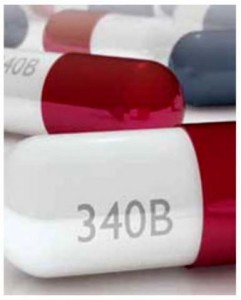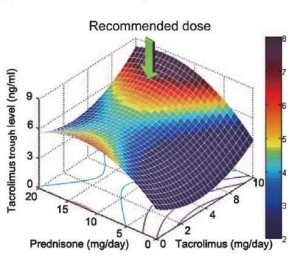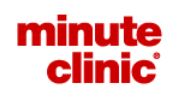- Results of world’s first study on new treatment for heroin addiction (worldpharmanews.com)Hydromorphone Compared With Diacetylmorphine for Long-term Opioid DependenceA Randomized Clinical Trial (archpsyc.jamanetwork.com)Meeting the Growing Need for Heroin Addiction Treatment (archpsyc.jamanetwork.com)
The results of the ground-breaking SALOME (Study to Assess Longer-term Opioid Medication Effectiveness) research, published in the Journal of the American Medical Association Psychiatry, show chronic heroin addiction now has another effective treatment tool – hyrdomorphone...(The study) found hydromorphone to be as effective as diacetylmorphine (pharmaceutical-grade prescription heroin) for people who have not benefited from previous treatments, such as methadone or suboxone...Key findings of the research include:
- Injectable hydromorphone is as effective as injectable diacetylmorphine for long-term street opioid users not currently benefitting from available treatments
- Study participants on both medications reported far fewer days of street-heroin and other opioid use at six months
- Participants also reported a significant reduction in days of illegal activities
- Almost 80% were retained in treatment at six months.
- Hydromorphone and diacetylmorphine are both safe when taken in a clinical setting.
- When It Comes To Health, Rural Areas Getting Left Behind (forbes.com)2016 County Health Rankings - Nevada (countyhealthrankings.org)Washoe County ranks fifth in Nevada health rankings (kolotv.com)Report ranks Clark County sixth in Nevada for health outcomes (reviewjournal.com)
...the Robert Wood Johnson Foundation released its seventh annual County Health Rankings, which, despite their name, aren’t a competition between U.S. counties to see who’s the best at health. Rather, the report exists to assess all the counties in the U.S. based on factors ranging from tobacco use and access to healthcare to air quality and even education…on the whole and for most of the country, the report doesn’t look terrible. Generally speaking, premature death numbers–a key indicator of overall community health–have been steadily going down. That is, unless you live in a rural area...There are 46 million people who live in rural communities. Nearly one in six Americans lives in a rural area…And the challenges they are facing are showing up in how they are not living as long as other Americans… Many of those rural counties, in fact, are already finding ways to address their local problems by offering services that are otherwise out of reach…some rural areas are getting together with communities nearby and combining to offer services that would be impossible to do alone…
- One-Third of Clinical Trial Results Never Disclosed, Study Finds (bloomberg.com)
One-third of clinical trials conducted at 51 major U.S. universities and academic hospitals were never published in a peer-reviewed journal or in a government registry online, according to a new study...The researchers looked at 4,347 trials that were completed between October 2007 and September 2010. Of those, only 29 percent had results published within two years of finishing data collection, and 13 percent were posted on the government database ClinicalTrials.gov within the same period...about 67 percent of the studies disclosed their results by...2014...You’d like to think that academic institutions are role models for science...The truth is we’re not doing very well...University of Florida and Ohio State University joined Yale with some of the highest rates of publication in peer-reviewed journals...Boston University, Cornell and Oregon Health and Science University...had among the lowest rates...Pharmaceutical companies, the government and foundations invest a lot of money in clinical trials...If the results aren’t made public, that’s wasted money...Disclosure of results is critically important to advance science...Whether those results are positive or negative, and are important as a part of our agreements with funders as well as the participants in clinical trials...Beyond creating a data void that makes future research more difficult, unpublished results also may represent an ethical issue. Patients in clinical trials undergo experimental treatments with the understanding that doing so will advance medical knowledge, which can’t happen if the results aren’t published...
- Drug Diversion in the 340B Program (pharmacytimes.com)
Section 340B of the Public Health Service Act requires drug manufacturers participating in the Medicaid Drug Rebate Program to sign an agreement...This...limits the price that manufacturers may charge certain covered entities for covered outpatient drugs...Drug diversion in the program is defined as a 340B drug being provided to an individual who is not an eligible outpatient of that entity and/or dispensed in an area of a larger facility that is not eligible (eg, an inpatient service or a non-covered clinic)...in 2013 that 94 audits were underway, which included 700 outpatient facilities and 1930 contract pharmacies. During these audits, drug diversion, duplicate discounts, and ineligible sites/providers were the common areas of noncompliance... Noncompliance to 340B program impacts patients’ bottom line because the more diversion that occurs, the more drug manufacturers increase prices for both public and private insurers, leading to an increase in rates and charges to patients. If HRSA were able to enforce 340B regulations and audit all hospitals on a continual basis, there would be fewer cases surrounding duplicate discounting, drug diversion, and ineligible site/providers...The 340B Program is in desperate need of stronger controls and more audits. Through proactive monitoring of drug inventory and dispensing, 340B drug diversion would decrease, leading to a decrease in drug spending.
- Drug dosing goes digital with software to personalize medication (statnews.com)Individualizing liver transplant immunosuppression using a phenotypic personalized medicine platform (stm.sciencemag.org)
A new algorithm may take the guesswork out of medicating patients with cancer, bacterial infections, organ transplants, and other conditions that require very precise drug dosing...Individual differences can alter patient response to medications...Metabolism, body type, ethnicity, other illnesses, and genetics can play a role in how patients respond to drug treatment...The researchers call their method parabolic personalized dosing, or PPD. They gave patients medication and then observed the dosages which brought positive responses...the dosage could be reduced or increased based on how much medication was in the patient’s blood, with the successful doses added to the parabola. The researchers called the parabola "a robust map that identifies drug doses (inputs) that ensure that a patient will stay in a target range."...Establishing a patient’s parabola still requires administering drugs and then observing the response, something doctors already do. "This allows us to make a better guess,"...In the age of big data, algorithms could play a helpful role in integrating a lot of patient information to make dosing decisions.
- Higher prices, changing preferences are driving an increase in drug spending (statnews.com)
Rising prices and a shift toward more expensive medications are driving the increases in prescription drug spending, according to a new report from the Department of Health and Human Services...From 2013 to 2014, drug spending rose by an estimated 12.6 percent, ending a period of slower growth that had started in 2008...Drug spending is projected to rise again to $457 billion in 2015 — up from $424 billion in 2014 — and to continue to outpace the growth in overall health care spending through 2018...Prescription drugs will account for about 16.7 percent of all US health care spending in 2015, up from a recent low of 15.3 percent in 2013...What explains this trend in drug spending? The growing number of prescriptions was one factor, but that alone was not enough to explain why spending rose so much, according to the report...The report attributed most of that growth to more prescriptions being prescribed per person, while the rest of the growth resulted from an overall population increase...higher prices were a major factor, too...The report "ignores the tremendous value medicines provide to patients, including many that offer improved treatment options for conditions that previously had few or no options..."said PhRMA...
- More College Students Misusing ADHD Med as Study Aid (realclearhealth.com)
College students aiming for an academic edge may explain a surge in the misuse of a stimulant commonly prescribed for attention-deficit hyperactivity disorder...Among U.S. adults, the number of Adderall prescriptions stayed stable from 2006 to 2011, but misuse of the drug jumped 67 percent and related visits to emergency rooms went up by 156 percent...The majority of adults who are using Adderall nonmedically are in the age range of 18 to 25...The researchers speculate that college students may prefer Adderall over the other stimulants because it increases two brain chemicals linked with better cognitive functioning and has a reputation for making people smarter...Many students mistakenly believe these drugs will make them smarter and more efficient at studying, so in their view the risk is worth the reward...because Adderall can improve focus, it may also give some students an unfair advantage, thus constituting academic dishonesty...
- Mathematical model may improve hepatitis C drug treatment (upi.com)DAA medication could lead to revolution in hepatitis C treatment (news-medical.net)HCV kinetic and modeling analyses indicate similar time to cure among sofosbuvir combination regimens with daclatasvir, simeprevir or ledipasvir (abstract) (journal-of-hepatology.eu)
Treatment cost for the average patient would go down by 16 to 20 percent, but for 40 percent of patients, the cost may go down by as much as 50 percent...Hepatitis C patients are often cured before completing a treatment regimen, suggesting patients require less of the drugs needed to fight the disease, according to a recent study...Researchers at Loyola University devised a mathematical model that predicts the length of time patients need direct-acting antiviral drugs, potentially limiting the cost of being treated with an expensive drug...Using more frequent blood testing, the researchers were able to determine hepatitis C levels and predict when the drug sofosbuvir, combined with one of three others, could be stopped...Treatment currently is standardized to be given for a set period of time, not tailored to the patient...In many cases, this may result in the prolonged use of expensive drugs with essentially no additional positive effect...
- Retail clinics don’t save money. But when you hear the reason will you be OK with it? (medcitynews.com)Retail Clinic Visits For Low-Acuity Conditions Increase Utilization And Spending (abstract, sub. req.) (content.healthaffairs.org)
MinuteClinic Retail clinics, long seen as an antidote to more expensive doctor offices and emergency rooms, may actually boost medical spending by leading consumers to get more care...Rather than substituting for a physician office visit or trip to the hospital, 58 percent of retail clinic visits for minor conditions represented a new use of medical services, according to the study...the journal Health Affairs. Those additional visits led to a modest increase in overall health care spending of $14 per person per year...This challenges the conventional wisdom that retail clinics save the health care system money...The study doesn’t contradict earlier research that found retail clinics provide care that costs 30 to 40 percent less than similar care provided at a physician’s office and that the treatment for routine illnesses was of similar quality. But it suggests those savings are more than offset by increased use of medical services...health plans and employers should carefully consider how they cover care at retail clinics...If the goal is to lower costs...then encouraging use of retail clinics may not be a successful strategy...
- UFC donates $1M to Ruvo center for brain trauma study — VIDEO (reviewjournal.com)
In the fight against brain disease, the UFC (Ultimate Fighting Championship) is putting its money on the Cleveland Clinic Lou Ruvo Center for Brain Health...The mixed martial arts organization...announced a $1 million donation over five years in support of the center's Professional Fighters Brain Health Study, which aims to understand the long-term effects of brain trauma...UFC Chief Operating Officer Ike Lawrence Epstein announced the donation....The goal of the study is not just to gather data on trauma but also to determine if brain damage can be detected early enough for intervention...CTE (chronic traumatic encephalopathy) is a degenerative brain disease found in people who have suffered repeated head trauma..."We're really pushing all of our athletes to make sure they come to this facility and get tested and be part of this study because that's the key to all of this," Epstein said.








